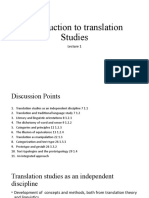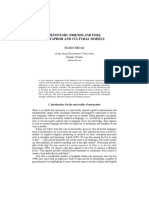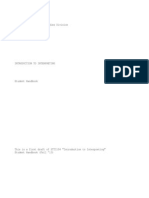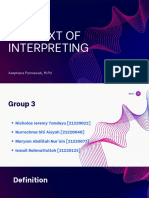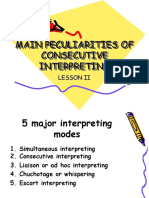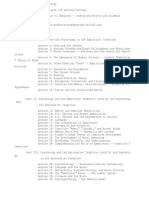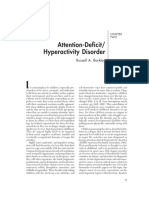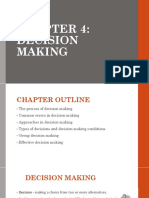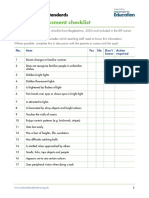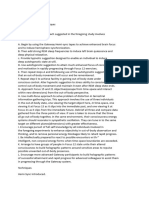0% found this document useful (0 votes)
46 views18 pagesChapter 4-Consecutive Interpreting
Chapter 4 discusses consecutive interpreting, which involves the interpreter waiting for the speaker to pause before translating the message into the target language, allowing for greater accuracy and note-taking. It contrasts this with simultaneous interpreting, where both languages are processed concurrently, leading to potential interference and less accuracy. The chapter also outlines Daniel Gile's model of consecutive interpreting, which includes two phases: listening and note-taking, followed by reformulation of the target speech.
Uploaded by
6tg5m7k9w2Copyright
© © All Rights Reserved
We take content rights seriously. If you suspect this is your content, claim it here.
Available Formats
Download as PPTX, PDF, TXT or read online on Scribd
0% found this document useful (0 votes)
46 views18 pagesChapter 4-Consecutive Interpreting
Chapter 4 discusses consecutive interpreting, which involves the interpreter waiting for the speaker to pause before translating the message into the target language, allowing for greater accuracy and note-taking. It contrasts this with simultaneous interpreting, where both languages are processed concurrently, leading to potential interference and less accuracy. The chapter also outlines Daniel Gile's model of consecutive interpreting, which includes two phases: listening and note-taking, followed by reformulation of the target speech.
Uploaded by
6tg5m7k9w2Copyright
© © All Rights Reserved
We take content rights seriously. If you suspect this is your content, claim it here.
Available Formats
Download as PPTX, PDF, TXT or read online on Scribd
/ 18




